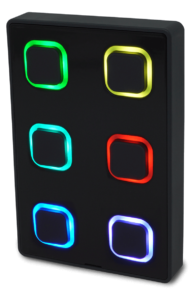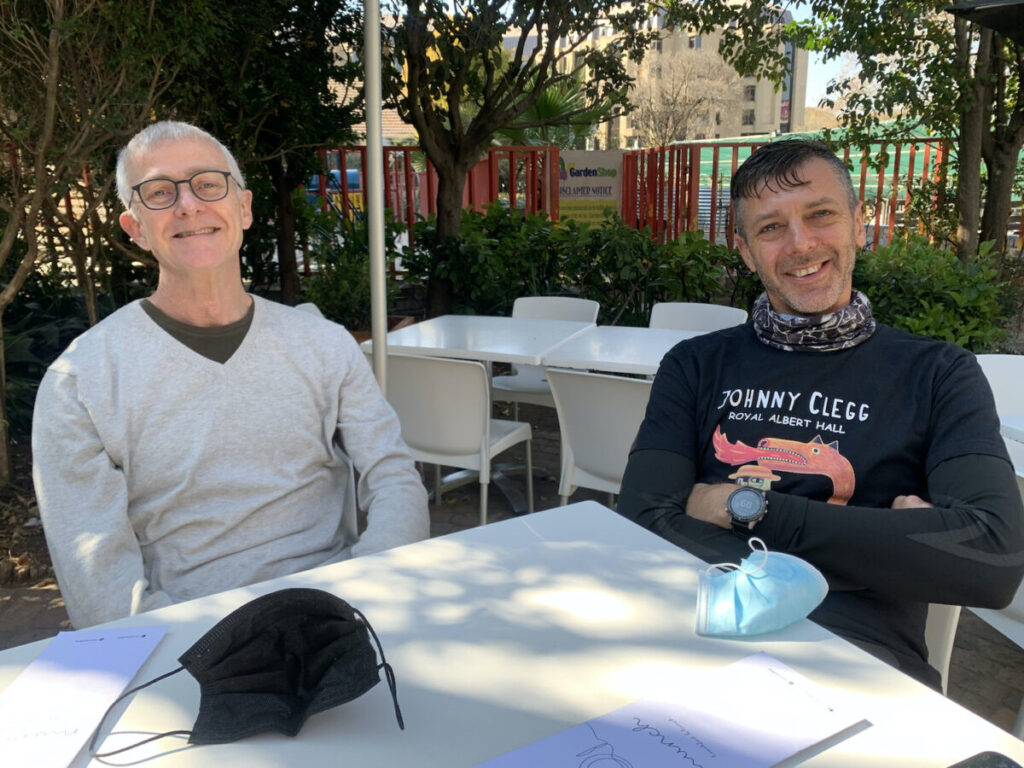Red Hill School, located in the heart of Johannesburg with a history that dates to 1907 and a reputation that embraces academics and the arts, has upgraded an existing music centre to include an Anolis Ambiane lighting system controlled by Visual Productions, along with a basic audio infrastructure. Respected lighting designer and theatre consultant, Denis Hutchinson, headed the project with the equipment supplied and installed by DWR Distribution.
Aside from their Creative Academic offering (music, visual art, design, and drama), Red Hill presents an extensive Arts Programme that includes drama, public speaking, debating, various music ensembles, marimbas, choir, visual art, design, and dance. “The school’s reputably known for RedFest, a festival that attracts the general public with music, art and a range of professional theatre productions and fringe shows,” explains Denis Hutchinson. “On these occasions, venues within the school are at a premium so a decision was made to refurbish the existing orchestra rehearsal room, enabling it to double up as a venue during the festival.” Due to the Covid-19 pandemic, the space is yet to be used as a venue.
While most of the other music practice rooms are small and used for solo instruments, the orchestra practice room is spacious, its stage area treated acoustically to accommodate louder instruments and the body of the room suitable for quieter acoustic instruments. Working on a tight budget, Hutchinson had to consider what equipment would best accommodate the revamped space and provide a long-term, easy to operate solution. “We went with the 16 Anolis Ambiane four colour (RGBA) lamps over the stage area, because there’s not enough head height to mount ordinary stage lights below ceiling level without someone knocking their head,” he describes. “Stage lighting in this scenario would also look more intrusive because people appear too close to the rig. I wanted something that could recess into the ceiling, and that’s why we went with Anolis.”
The Anolis Ambiane is specifically designed for ambient lighting requirements such as wall washing and accent lighting. The LED luminaire, available in RGBW and CCT versions, has a variety of beam angles, and with the incorporation of 18-bit dimming can dim down to OFF without a flicker.
A peaked roof provided space for a new wired FOH lighting bar which will accommodate additional lighting fixtures, whether hired in or purchased by the school when needed.

Visual Production’s B-Station II, positioned at the door, offers 6 presets that teachers can effortlessly access.
“In order to make the system as simple as possible for the school, the lighting runs on an architectural control system,” he explains. “A wall mount Visual Productions B-Station II, positioned at the door, offers 6 presets that teachers can effortlessly access. The system also includes a DaliCore which speaks to the Dali auditorium lighting.” The DaliCore can receive any entertainment protocols like DMX, Art-net or sACN, and trigger the required DALI control message.
Without needing a lighting desk, users can select various looks at the touch of a button. On a practical level, white light can be selected over the stage and auditorium for rehearsals, a lower light level can be chosen when presenting PowerPoint presentations, and there is a basic light level used when cleaners work in the venue. For performances, a few mood states have been programmed for the stage.
“This was the first DaliCore install in the world because it was a brand-new product by Visual Productions,” said Johnny Scholtz from DWR who oversaw the control elements of the project. “The system worked beautifully delivering a seamless integration between Dali and DMX.”
The system can also be accessed from a tablet or smartphone by using an App, which presents considerably more options. While the wall panel has 6 settings, the Kiosc Lighting Control App allows many pre-programmed looks, enabling the creatives to pull off a small show from a mobile phone if they choose to!
Should the need arise for a more elaborate lighting show, the venue is equipped with a control position and a patch lead; the architectural system can be unplugged, and an ordinary lighting desk set up and patched. The idea is that for the duration of RedFest every year, the school can hire in a desk instead of having a permanent lighting console gathering dust for 49 weeks of the year, only to be used for three!
If required, the school could also hire in a house rig. “Everything has been integrated into one system which is amazing,” says Hutchinson. “The FOH bar has hot power and DMX for anyone who goes in with a rig unless they want to run incandescent lighting, in which case they will have to add the necessary cabling. If using an LED rig, which is more likely, the school is equipped. Eventually, the plan is to put in six decent mini profiles as FOH lighting and four colour changing LEDs. This combination, along with the Anolis fixtures over the stage, should really help with the kind of shows that will be put on during RedFest.”
Equally important, the reticulation for sound is now in place. The budget did not allow for a sound system, but balanced lines, speaker points and monitor points have been installed, allowing the school to use the infrastructure to accommodate the gear they already own. “Down the line, the plan is to add a permanent system as although it’s an orchestra rehearsal room, the moment you have electronic instruments, you need a PA of some sort,” said Hutchinson.
A little recording studio is located downstairs and links to the orchestra room. “We didn’t run a full set of balanced lines between the two spaces, but there is a digital connection. The idea is if they are using the orchestra room to actually have instruments in rather than a recording studio, it will be fed digitally. It also means that they could, theoretically if doing a show, have the instruments in the recording studio and send the signal back upstairs. As a result, it’s a proper control room and a recording station.”
The audio install was headed by Richard Smith of DWR. “It is wonderful to work with a consultant like Denis Hutchinson who plans well in advance,” said Smith. “The school has the cabling infrastructure in place from the outset as opposed to having to try retrofit later, which would be more expensive and messier.”
While Red Hill’s new space is not a full-on theatre, clever planning has created a venue where the atmosphere can be set to create an appealing, warm and workable space for both performers and those watching.







